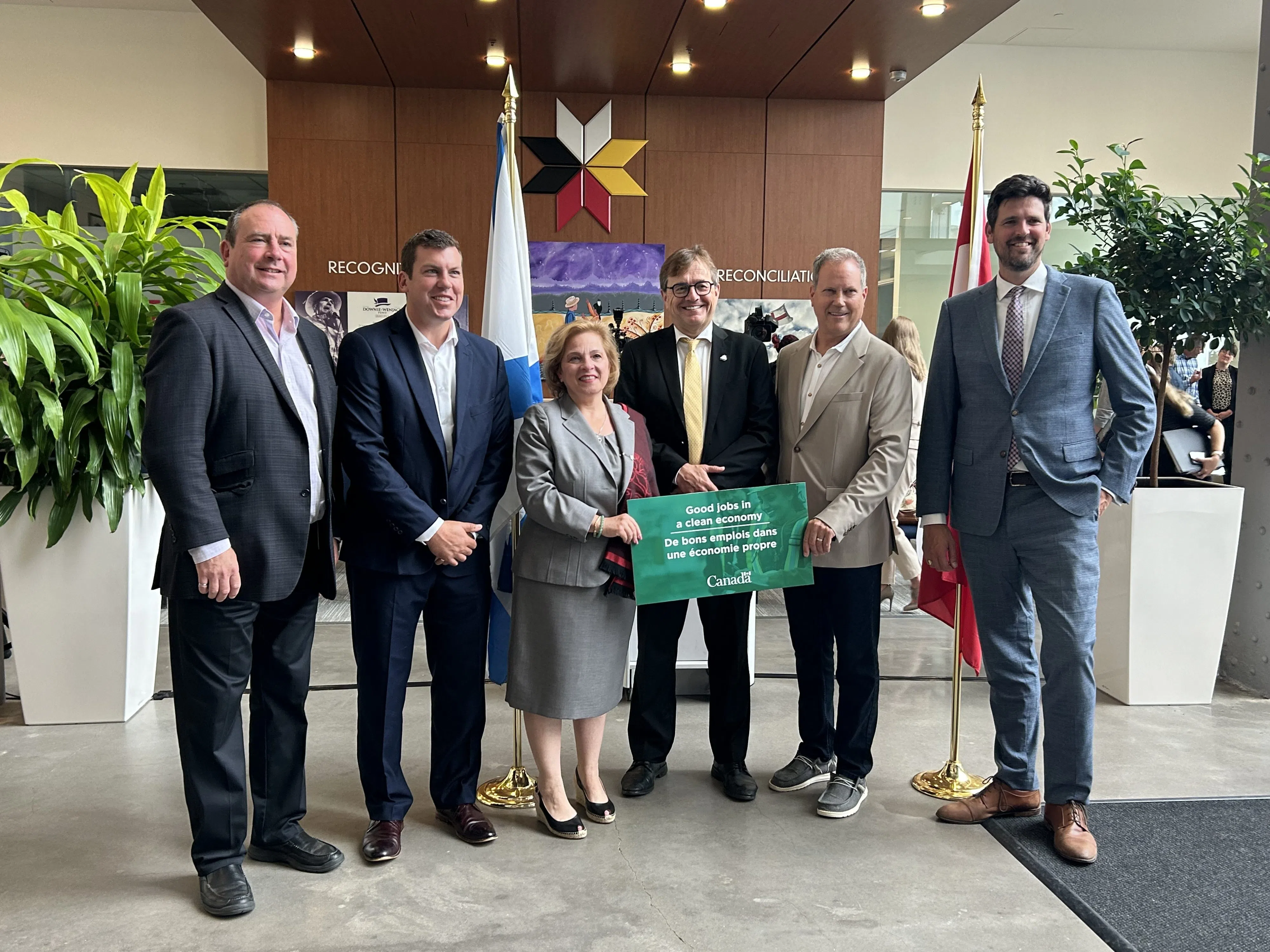The feds plan to spend $192 million on clean energy projects across Nova Scotia to support green energy.
They include wind energy in Windsor, Higgins Mountain and the District of Argyle, along with Nova Scotia Power’s electricity storage project.
The federal government announced the funding at the Nova Scotia Power building in downtown Halifax on Tuesday.
About $25 million will go to the Benjamin Mill Wind Limited Partnership to build a 33.6-megawatt wind project in Windsor. The partners in the project are Natural Forces Developments and Wskijnu’k Mtmo’taqnuow Agency, a corporation owned by 13 Mi’kmaq bands in the province.
Another $25 million will go to the Higgins Mountain Wind Farm Limited Partnership, which includes Elemental Energy Renewables Inc., Sipekne’katik First Nation and Stevens Wind. The project hopes to build a 100-megawatt wind farm in Higgins Mountain.
An additional $25 million will go to the Wedgeport Wind Farm Limited Partnership for an 84-megawatt wind farm in the District of Argyle. Partners in the project include Elemental Energy Renewables Inc. and Sipekne’katik First Nation and Stevens Wind.
About $117.6 million will go to Nova Scotia Power to build three 50-megawatt and 200 megawatt hour battery energy storage systems in Bridgewater, Sider Lake and White Rock.
Funding will go to other grid upgrades to support transitioning from coal, according to a news release.
The utility’s clean energy officer Mark Sidebottom said batteries will store energy to make the grid more efficient.
He said wind turbines sometimes produce more power than the grid needs, so they have to turn them off.
But with this battery storage system, he said that extra power will go to storage batteries which can provide backup power to the grid.
If a power plant was shut down or a transmission line had to be turned off, these storage batteries could activate in a second, he said.
He said the money will also alleviate how much the construction impacts the rates for power customers.
One of the most important things to him was being able to work with the 13 Mi’kmaq communities as part of the Wskijnu’k Mtmo’taqnuow Agency, he said.
“For us, that’s a really great collaboration story, and we look forward to doing more things like this in the future.”










